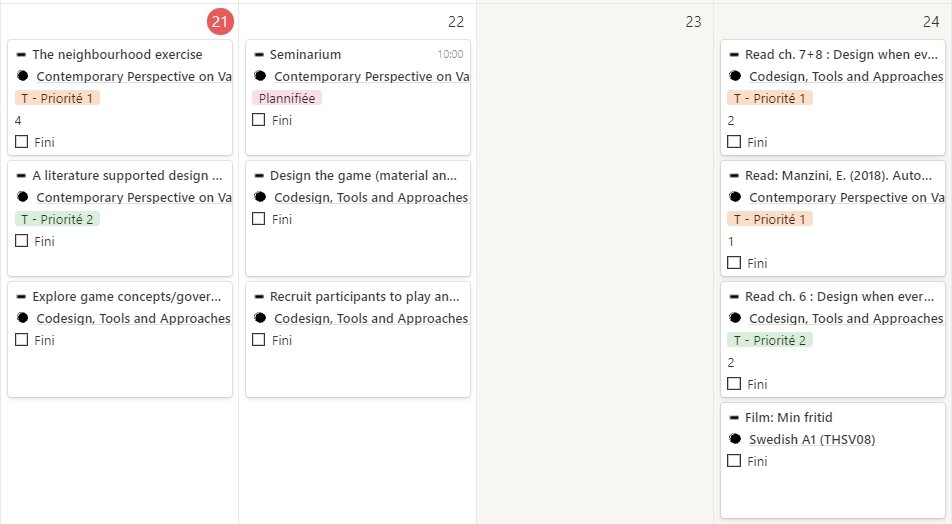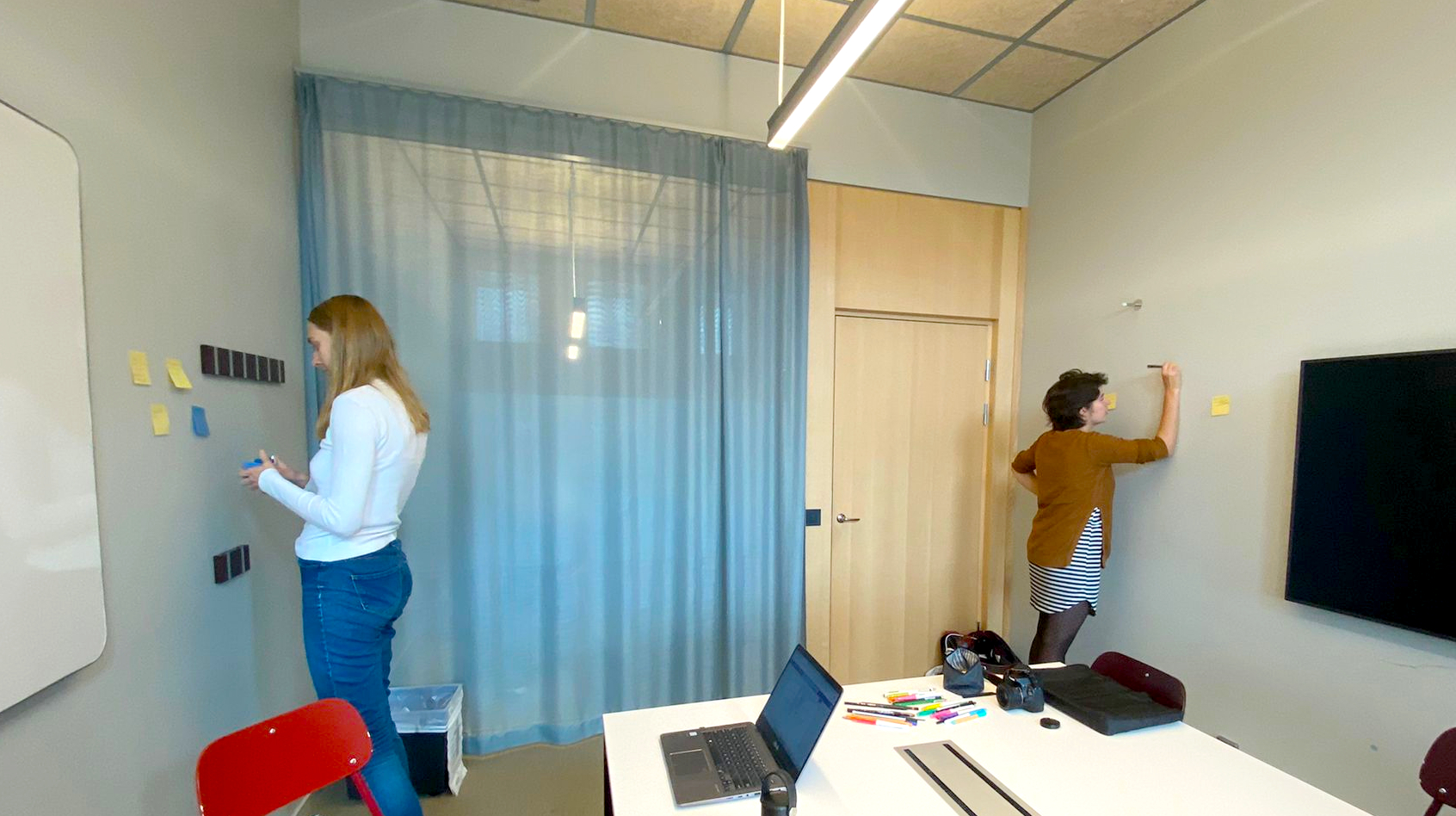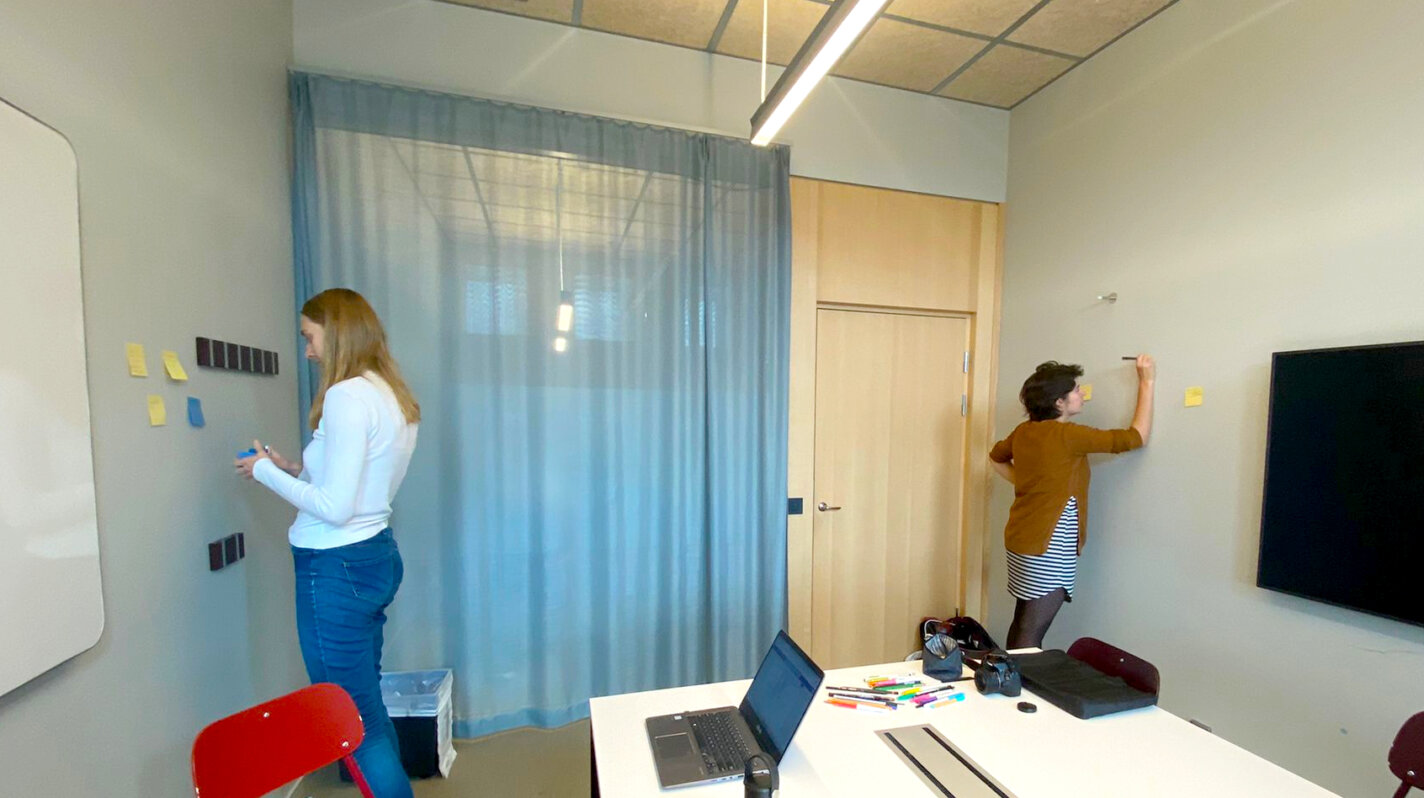October 21, 2021
Design master - My self-study experience, tips and tools
It’s been a while since I studied at a university.
I got my bachelor degree in 2014. Since then, I studied in an industrial design school.
I am really excited to study in Sweden and thrilled to be in a program that corresponds perfectly to what I want to learn more about.
However, one of the difficulties I could see coming was a complete change in study methods.
During my bachelor, the days would be filled with seminars and labs; in my design school, we would have our own work table for the semester. When we didn’t have class, we would be constantly surrounded by other students.
Here, the calendar is organized a little bit differently. We have around 4 courses each semester: a studio, our track course, and two mandatory/elective courses.
In a regular week, we usually have 3 lectures/seminars and 1 coaching session. Doesn’t seem like a lot, right?
Outside of class
Once the introductory lecture is done, we have to read a set of papers, do our own research and be ready to discuss what we’ve read and how it relates to our own work in the next seminar. The teacher usually introduces assignments at that same lecture and we have to manage our time to complete them before the presentation (there is sometimes a few coaching sessions). It can be individual work (written assignment; individual project; researching and sharing articles/podcasts; sketching) or group work (book club; group project; testing co-design tools).
I really like this way of studying, where we can dive deeper into the subjects and have time to research and work on specific tidbits, and not just work based on what the teacher gives us. It makes the courses really tailored to what you already know and what you want to learn. The group discussions are especially interesting since everyone references their own background (culture, previous studies or experiences, knowledge, etc.): it opens up different perspectives on the same subject.
One of the caveats of this system is that I spend most of the time studying alone. Having only 8 hours scheduled out of a 40 hours week means a lot of self-planning to be able to do everything.
Tools, tips and tricks to get to work
Planning
I like to use Notion to overview my schedule: a mix between scheduled events and tasks.
Planning tips:
- Break your assignments into smaller tasks and estimate the time it will take to complete them.
- Add a do-date: when you plan to do it, not when it’s due. Also, add the scheduled classes and all the other tasks and events.
- If a day has more tasks than you can handle, move one to the next day (you still have time to do it).
Get motivated
From my experience, it is not always easy to get out of bed on a rainy day, even with a to-do list. I find it even harder when the bed is within reach of my desk.
Here are a few tricks I use to get started.
“Get to your studies” tricks:
- Work outside of your home. The commute will give you fresh air, motion, and a bit of time to decide what you’ll be starting with.
Studenthuset (opens 5-23) is a pleasant place to study, where you’re surrounded by other students who work. - Set times to study with your classmates, or with other friends – they don’t have to study the same things as you, just work with you!
You can book study rooms to be sure to have some space together. - Don’t rely solely on willpower: bag packed and ready to go the day before, working on a school computer (no opened tabs, no social media logged-in)
- Take regular leg-stretchers.

Brainstorming in a study room – (c) Elena Jiménez
What are your tips and tricks to plan or work?




